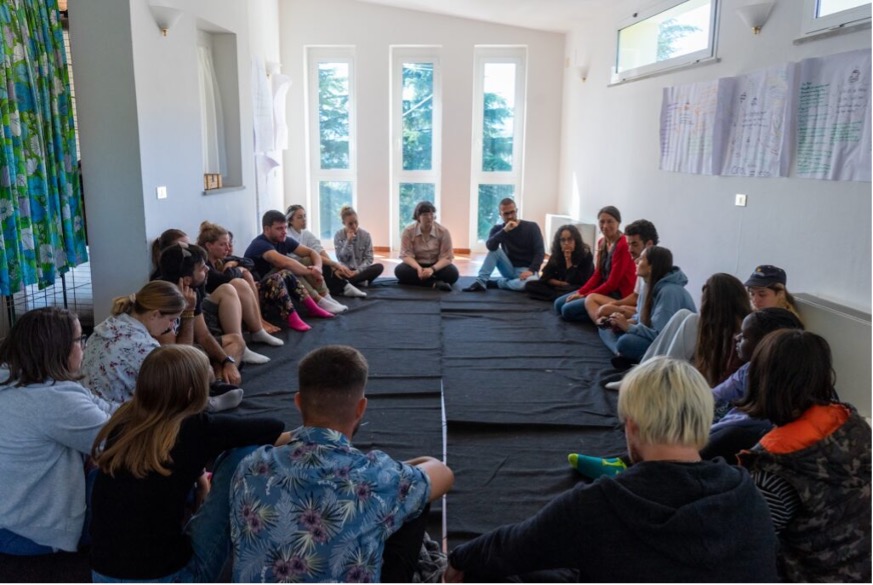In every rehearsal room, something magical happens. People from different backgrounds, with different ways of speaking and understanding, gather around the same story. They look at each other, listen, move, and slowly find a common language: one made not just of words, but of gestures, tone, and emotion. That is the essence of inclusive communication. And theatre is its living laboratory.
Beyond Words
Theatre has always been about connection. When young people step onto a stage, they learn that communication is not only about vocabulary or grammar, it’s about presence. A raised eyebrow, a pause, a shared laugh can say as much as a line of text. For those who struggle with complex language, or who are learning a new one, this is a revelation: they can be fully part of the story even without mastering every word.
In workshops across Europe, youth workers and drama teachers are using theatre exercises to explore clear and inclusive communication. Simple improvisation games help participants build confidence, trust, and clarity. They learn to express emotions in accessible ways, to translate abstract ideas into gestures, and to listen actively to one another.
A Common Language
At Sciara Progetti, we have seen this in practice through our European initiatives, among others in ‘CREATIVE EMOTIONAL JOURNEY – OPERATIONAL APPROACH Creativity at the service of Education’1 and ‘Tools for inclusive YOU.TH. (YOUth workers and THeater workers in synergy). A Real-digital trajectory‘2. Both projects use theatre as a space where young people can explore emotions, language, and inclusion together. Whether through storytelling or body expression, participants learnt that clarity grows when everyone feels safe to express themselves, and when communication becomes a shared creative act.

Theatre as a Bridge
Theatre reminds us that language is not fixed; it is created between people. In a play, as in life, meaning depends on listening. When a young actor with autism takes a longer pause, or when a migrant student searches for a word, the group learns to adapt, to wait, to help, to find another way of saying the same thing. This collective adjustment is what makes communication inclusive.
Theatre transforms mistakes into discoveries and differences into creativity. It teaches empathy, patience, and the joy of shared meaning, values at the heart of the ‘That’s Clear!’ project.
The Curtain Rises
In the end, inclusive communication is not a script to memorize. It’s a practice, a way of being together. And every rehearsal, every dialogue, every shared silence brings us closer to a stage where everyone can be heard, seen, and understood.
Because clear language, like good theatre, is about connection, and connection is where inclusion begins.
References
